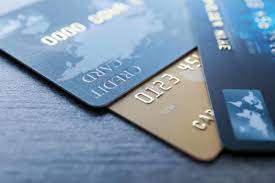Credit cards are, put simply, a staple of life. Estimates vary on the exact number of cards in U.S., Canadian, and others’ wallets, but virtually every study is in agreement that there are more credit card accounts in the United States than there are Americans!
The sheer volume of credit card usage in the world demands that consumers understand exactly what they’re getting themselves into every time they swipe, tap, or insert their card at a merchant’s payment terminal. Also, with the coronavirus pandemic continuing to wreak havoc on our world’s in-person meetings, dining, and shopping, the tangible act of paying with a credit card has been reduced even farther, making their usage far easier and the responsibility when it comes to the repayment process all the more important.
This guide will help you navigate everything from the application process through to rewards and repayment guidelines. Read on to explore the world of borrowing and consumer spending in a new light.
Applications

Credit card applications are a fairly straightforward endeavor. Whether you’re seeking out the Canadian Tangerine credit card offered by Tangerine Bank (formerly ING), or a specific travel rewards card that provides points in relation to spending, applying for a credit card only takes a few minutes these days.
Lenders must verify your identity through a series of basic checks—often involving past addresses, government issued identification card verification, and other mechanisms—and then they ask for data pertaining to your current financial situation. Providing information about your chequing account and savings account, as well as your salary and working status, is often all the insights a lender will need from you in order to make a decision.
With these data points, Tangerine, or other brick and mortar or online banks, are able to evaluate your credit score alongside your customer-provided details and offer you a credit card with a personalized spending limit and interest rate.
Interest Rates

A credit account provides a great backstop for young professionals and families who need additional support in the event of an emergency. However, credit card bills entice borrowers to pay back only the minimum payment instead of a larger portion of the balance. Rollover here creates a knock on effect that can snowball into larger debt over time. For this reason, a credit card should only be used as a last resort to fund emergency spending.
Interest rates are often adjusted by your lender throughout your ownership of the account, so keeping an eye on your statements is crucial to understanding your obligations and the best path forward when it comes time to decide on a payment amount each month.
As a brief note: The interest charged by these lenders is higher than an investor can expect to net in profit on a year-to-year basis. This means that squaring “net loss” in the form of added interest owed on credit debt against savings and other investment assets is important for understanding overall net worth and cash flow considerations for your household.
Enjoying the Rewards
Perhaps the most interesting aspect of the landscape of credit and borrowing is the ability to cash in on rewards. Many cards offer a cash back bonus (the Tangerine card provides for 2% on a variety of spending categories, for instance), and others yield travel points or other attractive offers. These are best leveraged by a net zero borrower.
Buying groceries, gasoline, and other necessities with your card and then paying the balance off every month is a great way to rack up a ton of points and cash back over a short period of time without incurring the losses that come along with monthly minimums. Taking advantage of these rewards programs can be lucrative, but it works best when you strategize spending.
Credit usage is a helping hand for many Canadian individuals and families, but using these tools carefully is your best bet when it comes to building a positive long term cash flow.

